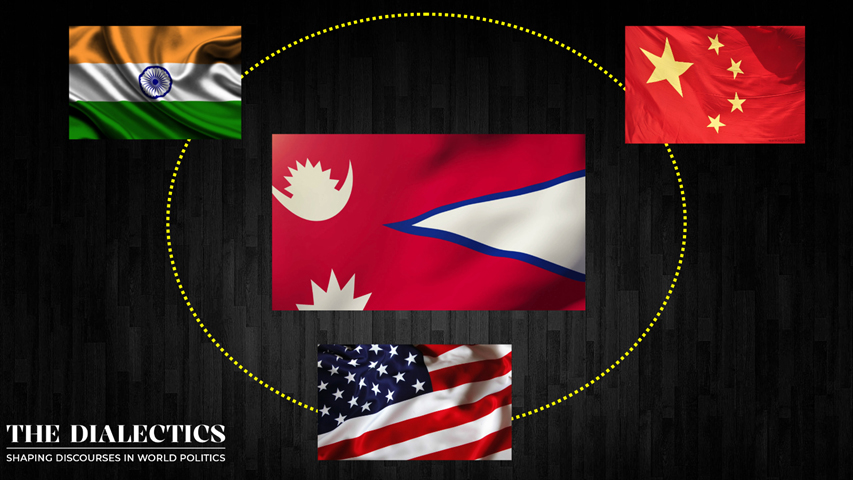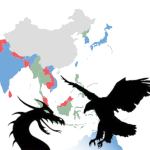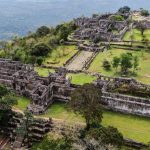A land of spirituality, a plethora of cultures along with high mountains reaching the highest mountain point in the world and flat plains rich for cultivation. Described by its founding Monarch King Prithvi Narayan Shah “A yam between two boulders” is the country of Nepal. Kathmandu, that is the Yam, has to be strong and resilient that holds a strategic value given its location between the two boulders, in Nepal’s case that is China to the North and India to the South.
Today both these countries are the two biggest populations in the world that work on two different systems of governance where one is the largest democracy while the other is the largest communist state in the world, what makes this more significant is the fact that both are nuclear powered nations. But today’s world has changed into a multipolar system, where distance between nations has significantly reduced along with the rise of modern technology. Further in the article we will look as to how Nepal has been adapting to the change in the world and has it successfully progressed since the 21st century.
Nepal’s road to Democracy
Democracy in Nepal was established in the year 1951, where the autocracy of the Rana’s was ended and King Tribhuvan formed a government with the Nepali congress party. In 1959, King Mahendra introduced a multiparty system holding Nepal’s first parliamentary elections, where again in 1960 he dissolved the parliament and established a party-less panchayat system. Through the Jana Andolan 1 in 1990 the Panchayat regime collapsed introducing a multiparty parliamentary democracy framing the constitution of Nepal 1990.
In 1996 the Jana yuddha the Maoist People’s had erupted to establish a communist state and completely draft a new constitution this continued, while in 2001 King Birendra was assassinated after whom the throne was ascended by King Gyanendra, where soon after in 2005 he attempted to revive absolute monarchy. The 2006 Jana Andola 2 brought down the royal regime following which in 2008 constituent assembly elections were held where the Communist Party of Nepal- Maoist (CPN-M) won establishing a Federal Democratic Republic, ending the 240-year-old Hindu Monarchy.
Although even after this, Nepal’s governance didn’t see any progress as the constitution was promulgated in 2015 and in 2022 general elections were held for the second time. Although the government has not been stable since Pushpa Kamal Dahal also known as Prachanda came into power in 2022 with the CPN-UML(Unified Marxist-Leninist) who again switched alliances in 2023 with the Nepali Congress as again in March 2024 he joined back the CPN-UML. Frustrated with this, the Nepali Congress along with CPN-UML formed an alliance to overthrow Prachanda and bring KP Oli into power where he will share the second half of the term with Sher Bahadur Deuba.
Dire state of Nepal’s Economy
More than 50% of the population in Nepal is employed through agriculture, while a significant portion of the GDP is constituted by remittances. A crucial lack of infrastructural development and economic opportunities for its citizens has made the people of Nepal move out of the country where families are relying more on remittances. Nepal has been on the list of Least Developed Country (LDC) since its inception in 1971. Being a country with instability and frequent protests where from July 2023 to April 2024 itself Nepal saw more than 2000 protest rallies, this has left the international investors away from investing in Nepal therefore a smaller number of Foreign Direct Investments.
Geopolitics and Development are the most discussed topics in Nepal, the country’s development relies heavily on external support, given its location as a landlocked country it has failed to diversify its sources of economic wealth generation over the years. Nepal’s Northern boundary towards China is a mountainous terrain while its boundary with India is a long stretch of flat plains, making its relations with India geographically ideal for connectivity to the sea. Also 1/3rd of Nepal’s territory is a part of the Tibetan Plateau while 90% population is towards the south. This takes us back to the quote “a yam between two boulders” so now let us look into the two boulders that have been mentioned above.
India and China: Balancing or Bandwagoning
Often argued that the foreign aid and development initiatives of the donors are often shaped through the benefit of their Geopolitical interests. As Prime Minister Jawaharlal Nehru in the context of Nepal said “From time immemorial, the Himalayas have provided us with a magnificent frontier. We cannot allow that frontier to be penetrated because it is also the principal barrier to India”. India and Nepal’s relations are often described as “Roti-Beti” relations, as there exists a deep people to people contact.
This relation often sees its downs, as can be seen in 2015 when Nepal brought changes to its constitution, India was against certain changes as New Delhi wanted Nepal to consider the interests of Madhesis, as there also broke out protests against the new changes which also turned violent at some places, due to this India announced an unofficial blockade. Whereas the Chinese on the other hand welcomed the 2015 constitution of Nepal, Xi Jinping during his state visit to Nepal mentioned about developing a Trans Himalayan multi-dimensional connectivity network in order to help Nepal towards the realisation of its dreams to transform itself from a land locked to a land linked country.
Kathmandu had previously signed the BRI in 2017, at the same time it is also a part of The Bay of Bengal Initiative for Multi-Sectoral Technical and Economic Cooperation BIMSTEC as well as the Bangladesh, Bhutan, India, Nepal (BBIN) initiative. So, yes traditionally Nepal’s major political donors have been India and China, and are the ones with the most impact on Kathmandu’s foreign policy. But today there is a third player in the region, the United States of America.
US – A third player
Nepal signed the Millenium Challenge Corporation in 2017 and was ratified by the Parliament in 2022, the MCC is a bilateral US foreign aid agency established in 2004. This shows the growing interest of the US in the region. As today the Indo-Pacific region has transitioned into the focal point of geopolitical strategies of nations around the world, the US here seeks to maintain a presence close to the Chinese while at the same time contain their growth in the region. Traditional India has always influenced Nepal through its deep historical and cultural roots. Today we are seeing three nations with greater interest towards Nepal, but has Nepal been able to benefit from this?
India and China are competing in order to try and acquire contracts over hydropower projects in Nepal, out of six significant hydropower projects of which 4 have been allotted to India. Along with various projects within Nepal, the Chinese have now initiated looking into the prospect of building a railway connection with Kathmandu. At the same time Nepal and the US through the MCC have signed two major contracts valued at more than 150 million dollars. It is argued that Nepal’s reliance on external aid has led towards the creation of a debt trap for Nepal.
Corruption and Political instability still persist across all of Nepal, ideological divides, factionalism, power struggle have furthered this issue. People’s trust in their own state & society is diminishing, ineffective diplomatic & bureaucratic mechanisms and diplomatic appointments through power sharing among the political parties have also affected the Foreign Policy of Nepal. Nepal at the same time is also prone to be a victim of adverse climate change effects and a region often riddled with natural disasters, as in 2015 Nepal was struck by a major earthquake measuring 7.8 in the Richter Scale.
Can Nepal Sustain?
Nepal in the coming times has to carefully manage its foreign policy as today the times are changing with conflicts emerging in various places in the world, the cocktail of geopolitical interests of India, China and the US in the region can prove greatly beneficial for this landlocked country if it successfully manages its relations with these three countries by actively and sharply engaging through its foreign policy. Nepal has to move towards establishing a stable political climate, anti-corruption initiative and make sure policies are implemented in the right manner.
Kathmandu is set to graduate from the list United Nations Least Developed Country in the year 2026 which can be a hope for Nepal to attract foreign investments but the question then remains is can Nepal sustain to keep up with the growing pace of the world given its instability within? A question that can only be answered as the time passes by. Until then the older generation have to create space for the new generation of leaders, ethical values have to be promoted within the society specially among the youth and a proper system of meritocracy has to be established within every sphere of governance.




